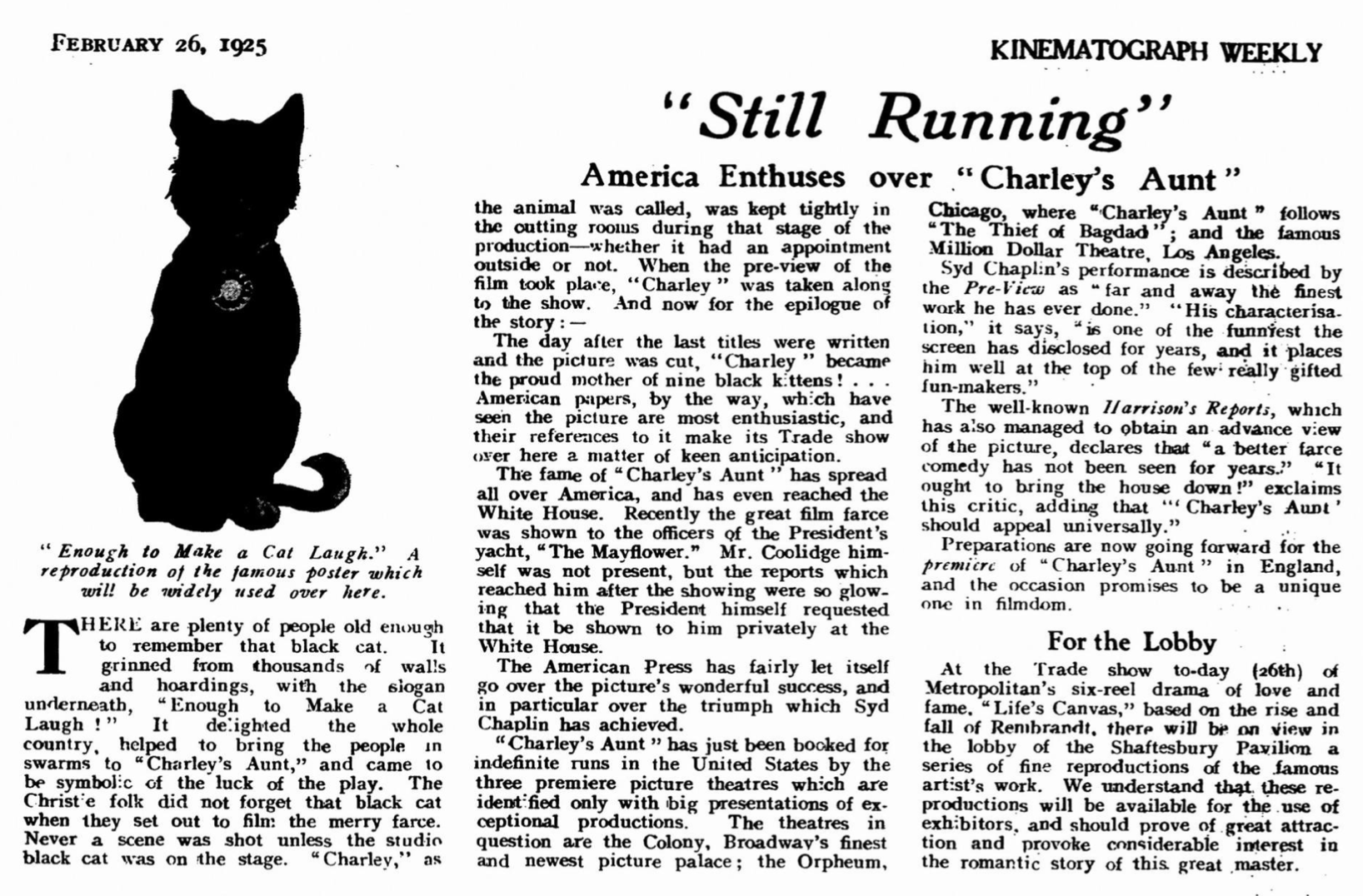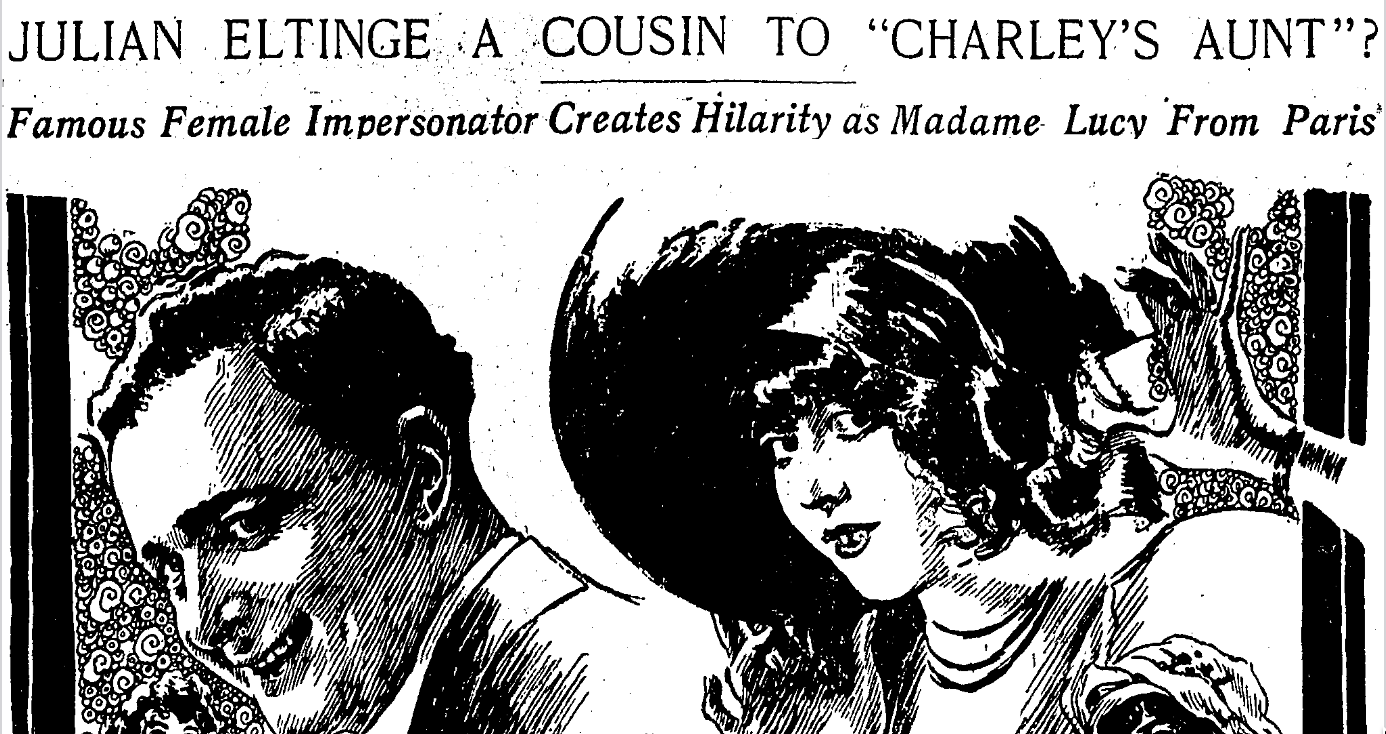Charley's Aunt

Babbs first shows up dressed as a woman when trying on a costume for a play he is to appear in-- displaying gender non-conforming behavior in the character's life outside of the narrative. When his friends require a female chaperone for their dates, Babbs is initially reluctant to play as his friend's aunt; however, he quickly assumes the role. Babbs' embracing of the role of Charley's aunt means he adopts feminine mannerisms-- he hides behind a fan, greets other women with kisses, smiles sweetly, and curtseys-- fully adopting the role of "woman." When the dates' guardian makes a snide remark implying Babbs is a man, Babbs jumps across the table with the intent to fight the man. Despite the remark being true, Babbs takes personal offense to the threat to his womanhood and acting in an un-ladylike manner to defend it. This suggests that Babbs not only assumes womanhood, but identifies with it. Furthermore, Babbs openly and enthusiastically flirts with two men in order to sow chaos. He appears to delight in both the flirtation and the ensuing rivalry. While Babbs true intent is to create disorder, he enjoys the process of the push-and-pull flirtation with the two men-- certainly played as a joke, but depicting homosexual desire on the part of Babbs. The cross-dressing facade is the core of many joke within the film and emblematic of perceptions of gender at the time. When Babbs' friend tells him "Keep your voice up and your skirts down!" we understand that the performance of womanhood requires not only a higher voice, but differing behavior in regards to modesty. This differing behavior from men to women appears again with Babbs' line "I'm too much of a lady to call you what I'm thinking." Ladies-- which Babbs is identifying himself as in this line-- are expected to be polite and hold themselves with decorum. In contrast, the two gentlemen courting Babbs act immaturely and mischieviously despite their class and age. While Babbs repeatedly identifies with womanhood, he ultimately gives up the ruse at the end of the film in order to be with his female lover.
